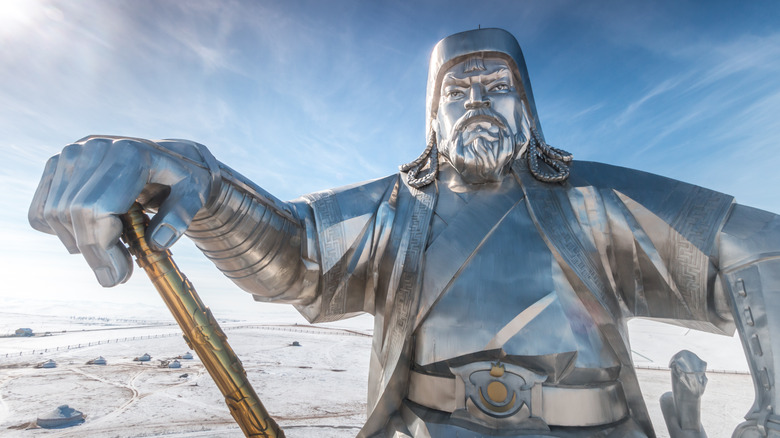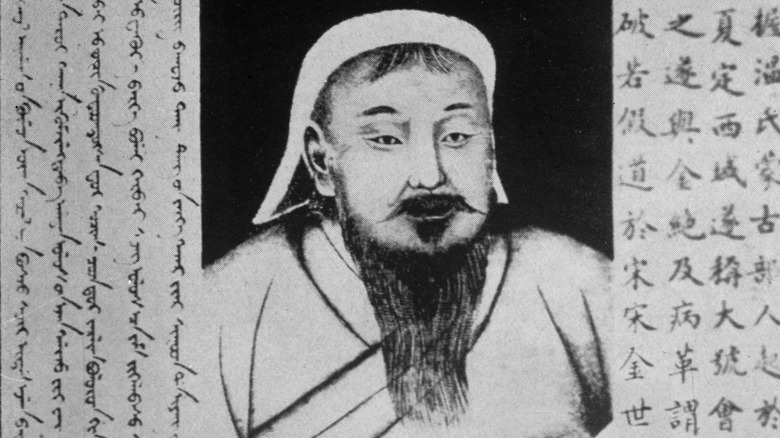What Was Genghis Khan's Real Name?
Genghis Khan is an historical figure who is as fascinating as he is notorious. Khan was the orchestrator of the Mongol Empire, which was the largest contiguous land empire ever created at its peak, per Britannica. His achievements were grand in scale, and his character often misunderstood.
He was, in many ways, a just ruler. As ThoughtCo. reports, Genghis' Mongolian empire allowed free worship, and ensured everybody got the same amount of prizes seized through war. He emphasized talent, hard work and effort; those who did not have the fortune to be born into high status could nonetheless rise to become high-ranking individuals through their merits. There's a lot that many people don't know about Genghis Khan, in short, down to his real name and its surprising origins.
Britannica states that his real name was Temüjin (or Temujin or Temuchin). He was born in 1162, around the time that his father, Yesügei, ended a conflict with an enemy. This warlord foe's name was seemingly Temüjin, and so the name was given to Yesügei's son, perhaps in the hope that the boy would grow to be a worthy opponent to all comers and a formidable fighter, too. Needless to say, this certainly proved to be the case.
From the exiled Temüjin to the mighty Genghis Khan
Per World History Encyclopedia, it was claimed that Temüjin was born with a clear sign that his life would be a hugely significant one: In the newborn's right hand was a blood clot. Whether this was a sign of great hardships or great success, Temüjin experienced it all during his dramatic life. According to Britannica, he was just 9 years old when his father was poisoned by Tatar enemies, far too young to command the respect of Yesügei's tribe and thus claim power. He, his mother, and the rest of his family were exiled, but despite the terrible hardship and hunger they faced, Temüjin did not give up.
Through appeals to his father's old allies, Temüjin developed a formidable army by early adulthood, and set about achieving the lofty goal of uniting the people of the Steppe, who had previously been more interested in infighting and consolidating their own tribal power, per Britannica. With campaigns characterized by the destruction of high-profile opposing families and the incorporation of the masses into his empire, Temüjin ensured that there was nobody to oppose him.
In 1206, per World History Encyclopedia, an historic meeting of Mongol leaders (a kurultai) saw Temüjin officially declared Genghis Khan, an honorific that loosely translates to leader of all. With that, he sealed his eternal place in history as the founder of the Mongol Empire.

